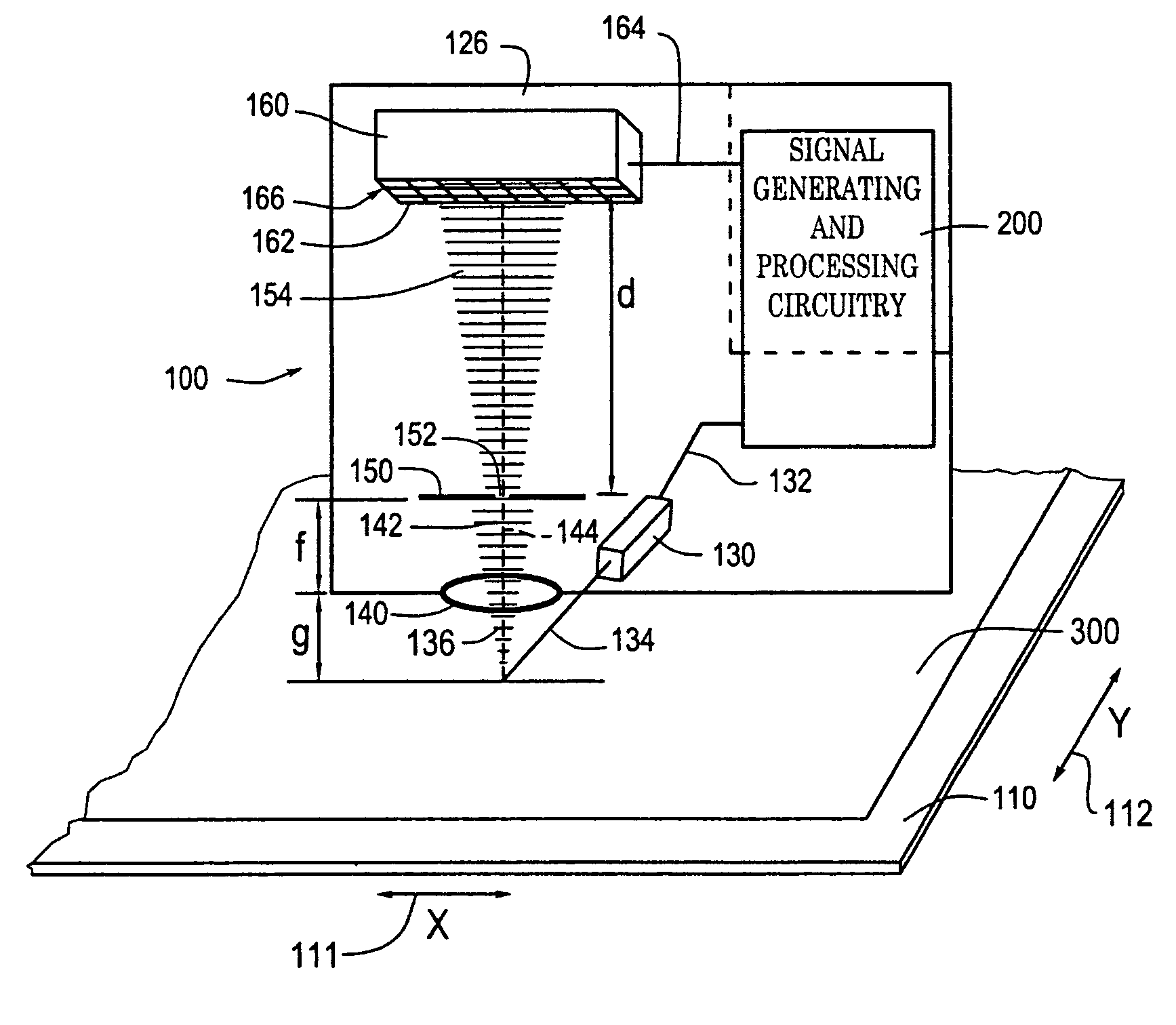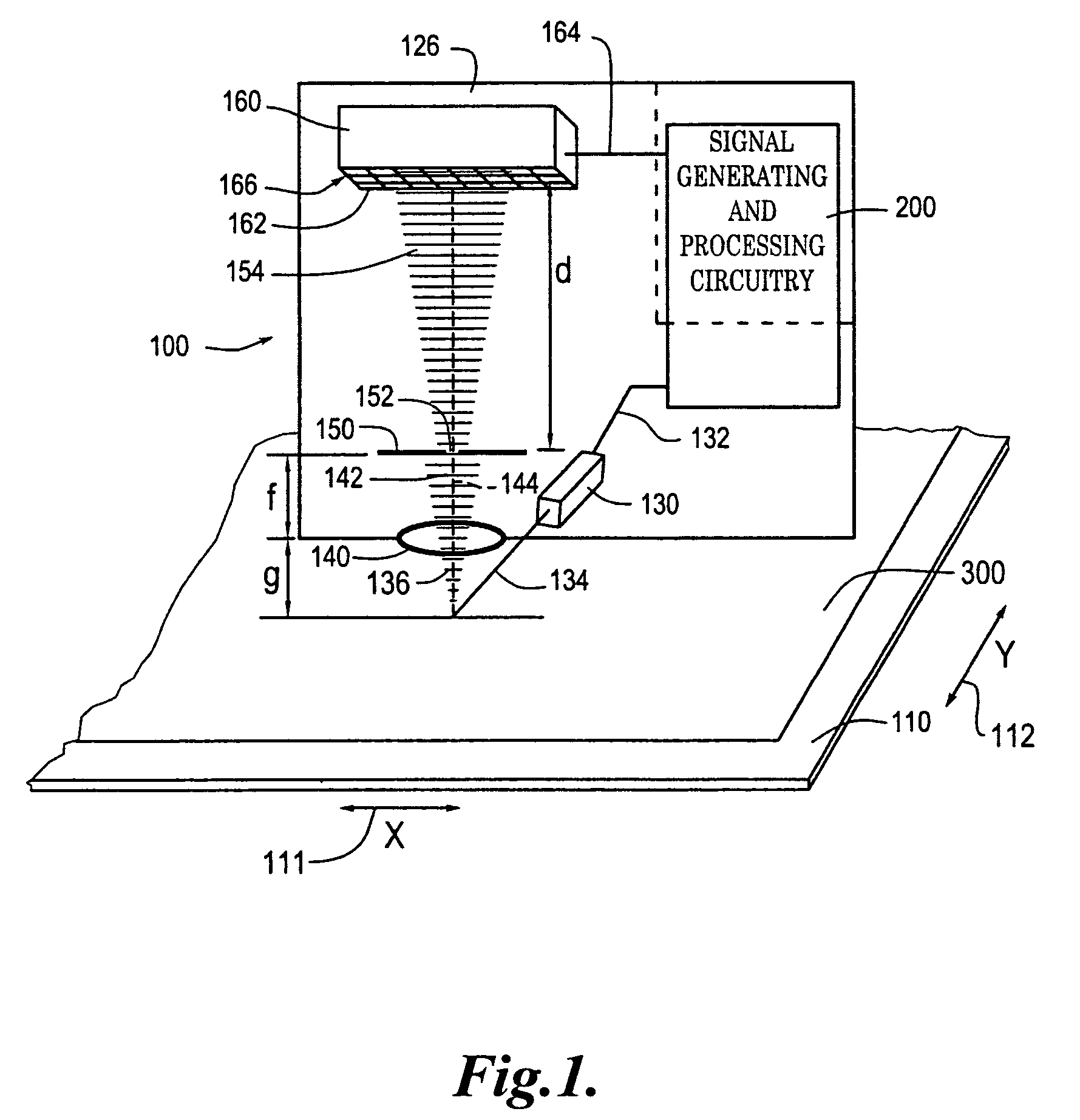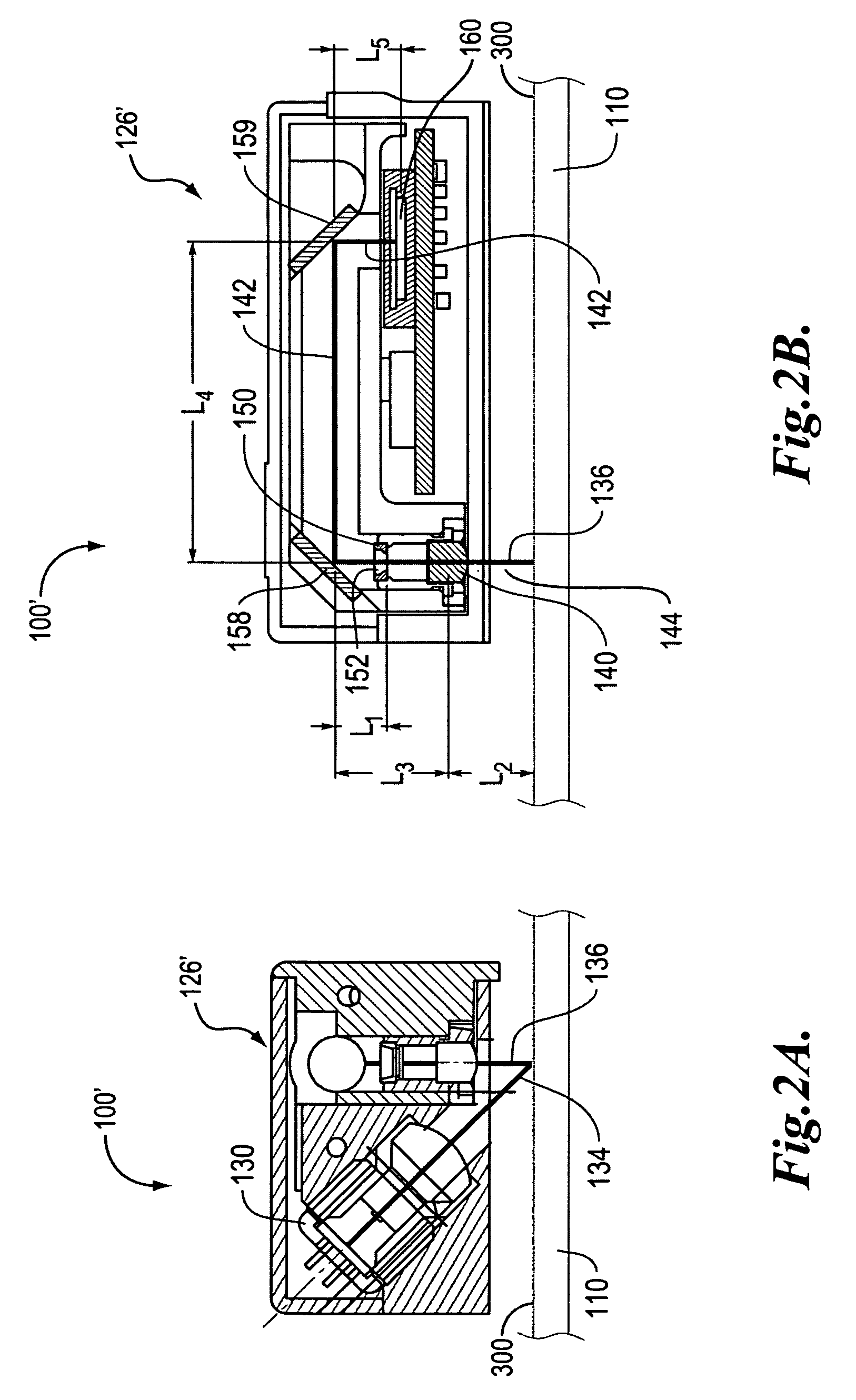System and method for improving accuracy in a speckle-based image correlation displacement sensor
a technology of displacement sensor and speckle, applied in the field of displacement sensors, can solve the problems of reducing the signal to noise ratio, reducing system accuracy and repeatability, etc., and achieve the effect of meaningful measurement resolution and/or accuracy, and improving the accuracy of speckle-based image correlation displacement sensors
- Summary
- Abstract
- Description
- Claims
- Application Information
AI Technical Summary
Benefits of technology
Problems solved by technology
Method used
Image
Examples
Embodiment Construction
[0047]FIG. 1 is a schematic block diagram of a 2-dimensional (2D) optical displacement sensor 100 usable with an optically diffusing, or optically rough, surface according to this invention to generate a 2D displacement measurement. The 2D optical displacement sensor 100 shown in FIG. 1 includes a readhead 126, signal generating and processing circuitry 200 and a 2D scale 110. The 2D scale 110 includes an optically diffusing, or optically rough, surface 300, which may be integral with and / or indistinguishable from the scale 110, or an added or processed surface. In FIG. 1, the components of the readhead 126, and their relation to the 2D scale 110 and the surface 300, are shown schematically in a layout that generally corresponds to an exemplary physical configuration, as further described below.
[0048]As described in more detail below with reference to FIG. 3, the optically diffusing, or optically rough surface 300 diffracts or otherwise scatters light used to illuminate the surface ...
PUM
 Login to View More
Login to View More Abstract
Description
Claims
Application Information
 Login to View More
Login to View More - R&D
- Intellectual Property
- Life Sciences
- Materials
- Tech Scout
- Unparalleled Data Quality
- Higher Quality Content
- 60% Fewer Hallucinations
Browse by: Latest US Patents, China's latest patents, Technical Efficacy Thesaurus, Application Domain, Technology Topic, Popular Technical Reports.
© 2025 PatSnap. All rights reserved.Legal|Privacy policy|Modern Slavery Act Transparency Statement|Sitemap|About US| Contact US: help@patsnap.com



